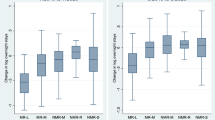Abstract
We present a theoretical dynamic model in tourism economics, assuming that the market for tourism is an oligopoly with differentiated products. Destinations can invest in order to improve their stock of physical, natural or cultural resources. Tourism flows yield current revenues, but they are usually detrimental for the stock of resources. We find the solution of the dynamic model, and in particular we find the open-loop Nash equilibrium of the game among destinations, under alternative settings, depending on whether the degree of differentiation among destinations is exogenous or endogenous. In particular, under the latter case, an increase of the number of destinations leads to a higher degree of product differentiation in steady state.
Similar content being viewed by others
References
Basar, T. and G. J. Olsder (1982, 1995 2nd), Dynamic Noncooperative Game Theory. San Diego: Academic Press
Bowley A. L. (1924). The Mathematical Groundwork of Economics. Oxford University Press, Oxford
Budowsky G. (1967). Tourism and Environmental Conservation: Conflict, Coexistence or Symbiosis. Environmental Conservation 3:27–31
Cellini R., Lambertini L. (2002). A Differential Game Approach to Investment in Product Differentiation. Journal of Economic Dynamics and Control 27:51–62
Cellini R., Lambertini L. (2004). Private and Social Incentives Towards Investment in Product Differentiation. International Game Theory Review 6:493–508
Chiang A. (1992). Elements od Dynamic Optimization. Mc Graw - Hill, New York
Cooper, C., J. Fletcher, D. Gilbert, R. Shepherd and S. Wanhill (1993, 1997 2nd), Tourism. Principles and Practice. New York: Addison Wesley Longman Publishing
Cooper C., Wahab S., eds. (2001) Tourism and Globalization. Routledge, London
Davies B., Downward P. (1998). Competition and Contestability in the UK Package Tour Industry: Some Econometric Observations. Tourism Economics 4:241–251
Dixit A. (1979). A Model of Duopoly Suggesting the Theory of Entry Barriers. Bell Journal of Economics 10:20–32
Dockner E. J., Jørgensen S., Van Long N., Sorger G. (2000). Differential Games in Economics and Management Science. Cambridge University Press, Cambridge
Fershtman, C. (1987), `Identification of Classes of Differential Games for Which the Open-Loop is a Degenerated Feedback Nash Equilibrium', Journal of Optimization Theory and Applications 55, 217–231
Fershtman, C., M. Kamien and E. Muller (1992), `Integral Games: Theory and Applications', in G. Feichtinger, ed., Dynamic Economic Models and Optimal Control (pp. 297–311), Amsterdam: North-Holland
Forster, B. A. (1980), ‘Optimal Energy Use in Polluted Environment’, Journal of Environmental Economics and Management 8, 312–333
Lanza A., Pigliaru F. (1994). The Tourism Sector in the Open Economy. Rivista Internazionale di Scienze Economiche e Commerciali 41:15–28
Mazzeo M. (2002). Product Choice and Oligopoly Market Structure. Rand Journal of Economics 33:221–242
Mehlmann A. (1988). Applied Differential Games. Plenum Press, New York
Piga C. A. G. (2003). Pigouvian Taxation in Tourism. Environmental and Resource Economics 26:343–359
Reinganum J. (1982). A Class of Differential Games for Which the Closed Loop and Open Loop Nash Equilibria Coincide. Journal of Optimization Theory and Applications 36:253–262
Singh N., Vives X. (1984). Price and Quantity Competition in a Differentiated Duopoly. Rand Journal of Economics 15:546–554
Spence A. M. (1976). Product Differentiation and Welfare. American Economic Review 66: 407–414
Throsby D. (2001). Economics and Culture. Cambridge University Press, Cambridge UK
Varian H. (2003). Economics of Information Technology mimeo. University of California, Berckeley, CA
Varian H., Shapiro C. (1999). Information Rules. A Strategic Guide to the Network Economy. Harvard Business School Press, Boston, MA
Vives X. (2000). Oligopoly Pricing: Old Ideas and New Tools. MIT Press, Cambridge MA
Acknowledgements
We thank the Associate Editor Alistair Munro, an anonymous referee, along with Carlo Carraro, Tiziana Cuccia, Yurj Kaniowsky, Luca Lambertini, Claudio Piga, Rosario La Rosa, Antonello E. Scorcu and Franz Wirl for helpful comments. The usual disclaimer applies.
Author information
Authors and Affiliations
Corresponding author
Appendix A
Appendix A
First order condition (14) in Text establishes the equality between the marginal revenue and the marginal cost (revenue and cost include investment in enhancing the stock of resources, along with the effect of tourists’ presence). Different cases must be considered.
the marginal revenue is decreasing and non-positive for any positive value of x. Consequently, the corner solution x=0 is the optimum, i.e., the allocation associated to the maximum profit.
, the marginal revenue is positive (so that both the marginal revenue and the marginal cost are positively sloped), and the intersection between the marginal revenue curve and the marginal cost curve represents the maxim profit point if and only if the marginal cost curve intersect the marginal revenue curve from below. Hence, we distinguish three sub-cases:
the optimum is \(x\to +\infty\) (This is due to the fact that the marginal revenue increases at a speeder pace than the marginal cost, as x increases. Unless some capacity constraint on the tourism flows is operative, like \(x \leqslant x^{\wedge}\), there is no finite solution for x);
the optimum is indeterminate (marginal cost and marginal revenue coincide);
the internal critical point denotes the maximum profit.
In sum, the dynamic problem can lead to a steady state with a positive and finite value for x, only under condition \([2B+D(n-1)] < <$> <$>[1-z(\rho+\delta)]/[\delta z(\rho+\delta)]\) in case (B.3). The system of these two disequations condition coincide with the condition given by (15) in Text.
Rights and permissions
About this article
Cite this article
Candela, G., Cellini, R. Investment in Tourism Market: A Dynamic Model of Differentiated Oligopoly. Environ Resource Econ 35, 41–58 (2006). https://doi.org/10.1007/s10640-006-9005-3
Accepted:
Published:
Issue Date:
DOI: https://doi.org/10.1007/s10640-006-9005-3




